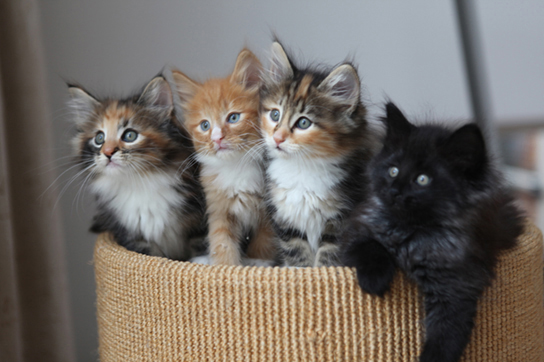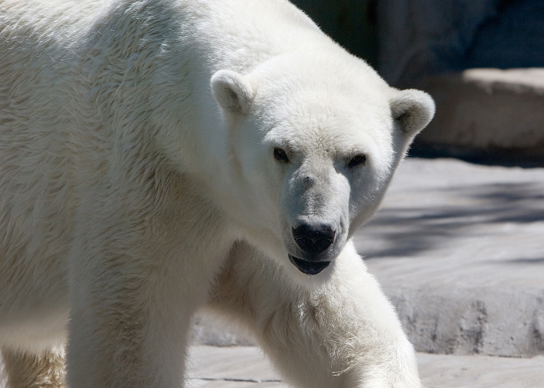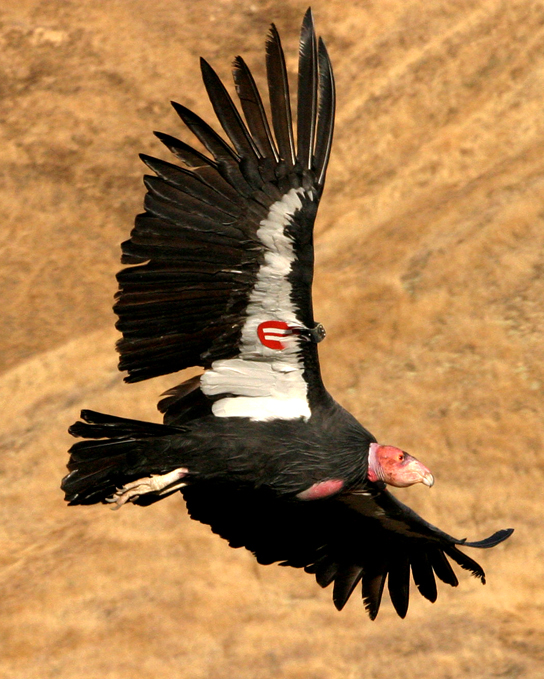2 Definition of Life
Learning Objectives
After exploring this chapter, you should be able to
- List and describe the core characteristics shared by all living organisms.
- Explain why it is difficult to draw a clear line between life and non-life.
Biology is the science that studies life. But what exactly is life? This may sound like a silly question with an obvious answer, but it is not easy to define life. Consider these puzzling examples: Is a robot that can move, respond to its environment, and even “reproduce” by building copies of itself truly alive? What about a seed that can remain dormant for decades before sprouting? Or a virus that can hijack a cell’s machinery to make copies of itself but cannot survive independently?
These examples illustrate why biologists have struggled for centuries to create a precise definition of life. For example, a branch of biology called virology studies viruses, which exhibit some of the characteristics of living entities but lack others. Although viruses can attack living organisms, cause diseases, and even reproduce, they do not meet the criteria that biologists use to define life. Similarly, scientists studying extremophiles—organisms that survive in harsh conditions like boiling hot springs or highly acidic environments—continue to expand our understanding of what forms life can take.
From its earliest beginnings, biology has wrestled with four questions: What are the shared properties that make something “alive”? How do those various living things function? When faced with the remarkable diversity of life, how do we organize the different kinds of organisms to understand them better? Finally, what biologists ultimately seek to understand is how this diversity arises and how it continues. As new organisms are discovered daily, biologists continue to seek answers to these and other questions.
Properties of Life
All living organisms (biotic) share eight key characteristics or functions: order, sensitivity or response to stimuli, reproduction, growth and development, regulation and homeostasis, energy processing, adaptation, and evolution. When viewed together, these characteristics serve to define life. Think of these characteristics as a checklist—while some non-living things (abiotic) might exhibit one or two of these properties, only living organisms demonstrate all of them working together as an integrated system.
Order (Cellular Organization)
Organisms are highly organized structures that consist of one or more cells. The cell is the fundamental unit of life, the smallest structure that can carry out all the activities we associate with being alive. Even very simple, single-celled organisms are remarkably complex. Inside each cell, atoms make up molecules. These, in turn, make up cell components or organelles.
Multicellular organisms, which may consist of millions of individual cells, have an advantage over single-celled organisms in that their cells can be specialized to perform specific functions and even sacrificed in certain situations for the good of the organism as a whole. For instance, the cells lining your stomach are specially designed to produce acid and enzymes for digestion, while nerve cells are structured to rapidly transmit electrical signals throughout your body. How these specialized cells come together to form organs such as the heart, lung, or skin in organisms like the toad shown in Figure 1 will be discussed later.

Sensitivity or Response to Stimuli
Organisms respond to diverse stimuli—changes in their internal or external environment. This responsiveness allows organisms to find food, avoid danger, locate mates, and maintain optimal conditions for survival. For example, plants can grow toward a source of light (phototropism) or respond to touch (Figure 2). Even tiny bacteria can move toward or away from chemicals (a process called chemotaxis) or light (phototaxis). The movement toward a stimulus is considered a positive response, while the movement away from a stimulus is considered a negative response.
Consider how your own body responds to stimuli throughout the day: your pupils contract in bright light, you pull your hand away from a hot surface, and your mouth waters when you smell your favorite food. These automatic responses help ensure your survival and well-being.

Reproduction
Single-celled organisms reproduce by first duplicating their DNA, which is the genetic material, and then dividing it equally as the cell prepares to divide to form two new cells. Many multicellular organisms (those made up of more than one cell) produce specialized reproductive cells that will form new individuals. When reproduction occurs, DNA, which encodes genes, is passed along to an organism’s offspring. These genes are the reason that the offspring will belong to the same species and will have characteristics similar to the parent, such as fur color and blood type.
Reproduction ensures the continuation of species and allows for the passing of beneficial traits from one generation to the next. Some organisms can reproduce asexually (creating offspring identical to themselves), while others reproduce sexually (combining genetic material from two parents to create genetically unique offspring).
Growth and Development
All organisms grow and develop according to specific instructions coded for by their genes. These genes provide instructions that will direct cellular growth and development, ensuring that a species’ young (Figure 3) will grow up to exhibit many of the same characteristics as its parents.
Growth refers to an increase in size and mass, while development involves the progressive changes in structure and function that occur throughout an organism’s life. For example, a caterpillar doesn’t simply grow larger to become a butterfly—it undergoes dramatic developmental changes that transform its entire body structure and function.

Regulation/Homeostasis
Even the smallest organisms are complex and require multiple regulatory mechanisms to coordinate internal functions, such as the transport of nutrients, response to stimuli, and coping with environmental stresses. For example, organ systems such as the digestive or circulatory systems perform specific functions like carrying oxygen throughout the body, removing wastes, delivering nutrients to every cell, and cooling the body.
To function properly, cells require appropriate conditions such as proper temperature, pH, and concentrations of diverse chemicals. These conditions may, however, change from one moment to the next. Organisms are able to maintain internal conditions within a narrow range almost constantly, despite environmental changes, through a process called homeostasis or “steady state”—the ability of an organism to maintain constant internal conditions. For example, many organisms regulate their body temperature in a process known as thermoregulation. Organisms that live in cold climates, such as the polar bear (Figure 4), have body structures that help them withstand low temperatures and conserve body heat. In hot climates, organisms have methods (such as perspiration in humans or panting in dogs) that help them to shed excess body heat.

Energy Processing
All organisms (such as the California condor shown in Figure 5) use a source of energy for their metabolic activities. Some organisms capture energy from the Sun and convert it into chemical energy in food (these are called autotrophs or producers); others use chemical energy from molecules they take in (these are called heterotrophs or consumers).
Energy processing, or metabolism, includes all the chemical reactions that occur within an organism to maintain life. This includes breaking down food molecules to release energy (catabolism) and using that energy to build new molecules and structures (anabolism). Without a constant input and processing of energy, life cannot be sustained.

Evolution
The diversity of life on Earth results from mutations (random changes) in hereditary material over time. These mutations allow the possibility for organisms to adapt to a changing environment.
Evolution by natural selection results in adaptations. All living organisms exhibit, to some extent, a “fit” to their environment. Biologists refer to this fit as adaptation, and it is a consequence of evolution by natural selection, which operates in every lineage of reproducing organisms. Examples of adaptations are as diverse as unique heat-resistant Archaea that live in boiling hot springs to the tongue length of a nectar-feeding moth that matches the size of the flower from which it feeds. All adaptations enhance the reproductive potential of the individual exhibiting them, including their ability to survive and reproduce.
Adaptations are not constant. As an environment changes, natural selection causes the characteristics of the individuals in a population to track those changes. For instance, peppered moths in industrial England evolved darker coloration during the Industrial Revolution to better camouflage against soot-covered trees, then evolved back to lighter colors as pollution decreased.
Nor are adaptations guaranteed. While natural selection is one major force of evolutionary change, it is not the only force that can cause organisms to evolve. All evolutionary change is predicated on what came before, and in some cases, evolutionary change can be random. All of these forces contribute to the diversity in life we see today.
Characteristics of Life Video
Reflection question: Do the characteristics listed in the video differ from those listed above?
Separating Living and Non-Living Things
Viruses present a fascinating challenge to our definition of life. Let’s examine how they measure against our eight characteristics:
| Characteristic of Life | Do Viruses Meet This Criterion? | Explanation |
| Order | Yes |
Viruses have organized structures with genetic material (DNA or RNA) surrounded by a protein coat.
|
| Cellular Organization | No |
Viruses are not made of cells and cannot exist independently.
|
| Response to Stimuli | Yes |
Viruses can recognize and bind to specific host cells.
|
| Reproduction | Partially |
Viruses can replicate, but only inside host cells.
|
| Growth and Development | No |
Viruses don’t grow or develop; they are assembled by their host cells.
|
| Homeostasis | No |
Viruses cannot regulate their internal environment.
|
| Energy Processing | No |
Viruses cannot process energy on their own.
|
| Evolution | Yes |
Viruses have populations that vary, meaning that they can evolve and adapt over time.
|
So, viruses meet some, but not all of the key criteria we have used to define life. So, are they alive? Most biologists classify them as non-living entities that exist on the border between living and non-living matter. However, this classification remains controversial, and the scientific community continues to debate whether viruses should be considered alive.
Viruses are not the only entities that challenge our definition of life. The complexity of defining life becomes apparent when we consider other borderline cases. For instance, reproductively sterile hybrids like mules are clearly alive and exhibit most characteristics of life, yet they cannot reproduce—a trait many consider essential to life. This echoes a famous dilemma posed at a scientific conference: if reproduction is the key characteristic of life, “then one rabbit is dead. Two rabbits—a male and female—are alive, but either one alone is dead” (Koshland, Jr. 2002). Other biological molecules blur the line even further. Prions—infectious proteins that cause diseases like mad cow disease—can replicate themselves but lack genetic material entirely. Similarly, certain RNA molecules can catalyze their own replication without any cellular machinery. These examples demonstrate that some biological entities possess only a few characteristics of life, making the boundary between living and non-living matter less clear-cut than we might initially assume.
Debating the definition of life is not important for understanding how life works on Earth, but also for discovering life beyond Earth. The characteristics of life serve as our roadmap for designing detection instruments, interpreting data from space missions, and evaluating potential biosignatures in alien atmospheres. Without a working definition of life, how would we recognize it if it were based on different chemistry than our own, or if it exhibited only some of the characteristics we associate with terrestrial life? The search for extraterrestrial life forces us to think beyond Earth-centric examples and consider whether our eight characteristics are universal requirements or simply features of life as we know it. This ongoing challenge continues to refine our understanding of life itself and guides our exploration of the cosmos.
Defining life is no easy task
Below are is a series of conversations and reflections on the challenge of defining life.
What is life? Scientists still can’t agree. (Vox 2023)
In the following podcast, science journalist, Carl Zimmer (NY Times), discusses the challenges of coming up with one single definition of life.
Reflection question: What characteristics from the book do they mention in the podcast?
Life but not Alive (TEDx 2017)
A talk by Dr. Kate Adamala (U of Minnesota) on building synthetic life and what it means to be “alive.”
Glossary
Adaptation: A specialized feature or behavior of an organism that enhances its survival and reproductive success in a given environment; the result of evolutionary processes.
Autotroph: An organism that can produce its own food using energy from sunlight or chemical reactions (also called a producer).
Cell: The smallest fundamental unit of structure and function in living things; the basic building block of all life.
Energy Processing (Metabolism): The ability of an organism to use forms of energy for its metabolic activities, including both the breakdown of molecules for energy and the synthesis of new molecules.
Evolution: The process of gradual change in a population over time that can lead to new species arising from older species.
Growth and Development: The ability of an organism to increase in size and undergo progressive changes in structure and function according to specific instructions coded by genes.
Heterotroph: An organism that cannot produce its own food and must consume other organisms for energy (also called a consumer).
Homeostasis: The ability of an organism to maintain constant internal conditions despite changes in the external environment.
Multicellular: Consisting of more than one cell; organisms with specialized cells that work together.
Organism: An individual living entity that exhibits all the characteristics of life.
Reproduction: The ability to produce offspring either asexually (by oneself) or sexually (with another organism).
Sensitivity to Stimuli: The ability of an organism to detect and respond to changes in its internal or external environment.
Stimulus (plural: Stimuli): Any change in the environment that can be detected by an organism and potentially trigger a response.
Thermoregulation: The process by which organisms maintain their body temperature within optimal ranges.
Virus: A microscopic infectious agent that consists of genetic material (DNA or RNA) surrounded by a protein coat; exhibits some characteristics of life (such as reproduction and evolution) but lacks others (such as cellular organization and independent metabolism), placing it on the border between living and non-living matter.
References and Sources:
- Clark, M.A., Douglas, M., and Choi, J. 2018. Biology 2e. OpenStax. Retrieved from https://openstax.org/books/biology-2e/pages/1-introduction
- Cleland, C. E., & Chyba, C. F. (2002). Defining ‘life’. Origins of Life and Evolution of the Biosphere, 32(4), 387-393.
- Koshland Jr, D. E. (2002). The seven pillars of life. Science, 295(5563), 2215-2216.
- Luisi, P. L. (1998). About various definitions of life. Origins of Life and Evolution of the Biosphere, 28(4-6), 613-622.
- NASA Astrobiology Institute. (2015). Astrobiology Strategy 2015. NASA.
- Oparin, A. I. (1953). The Origin of Life. Dover Publications.
- Ruiz-Mirazo, K., Peretó, J., & Moreno, A. (2004). A universal definition of life: Autonomy and open-ended evolution. Origins of Life and Evolution of Biospheres, 34(3), 323-346.
- Schrödinger, E. (1992). What is Life? The Physical Aspect of the Living Cell. Cambridge University Press. (Original work published 1944)
- Trifonov, E. N. (2011). Vocabulary of definitions of life suggests a definition. Journal of Biomolecular Structure and Dynamics, 29(2), 259-266.

